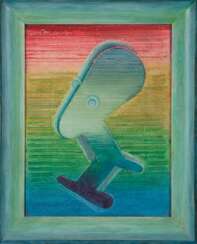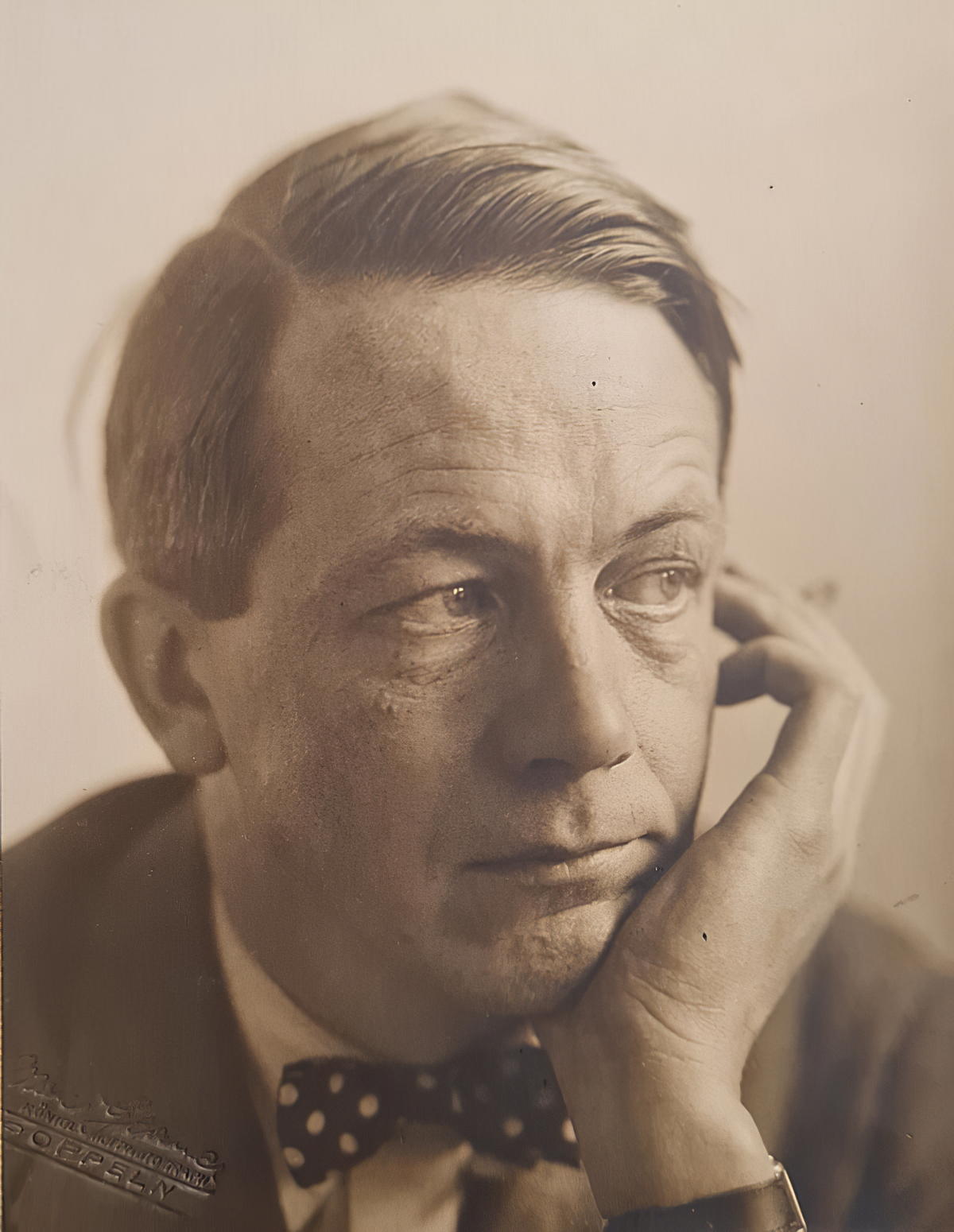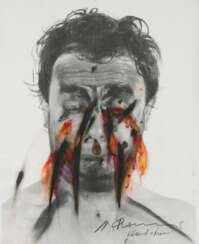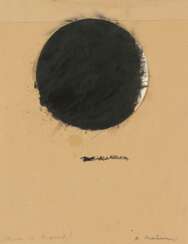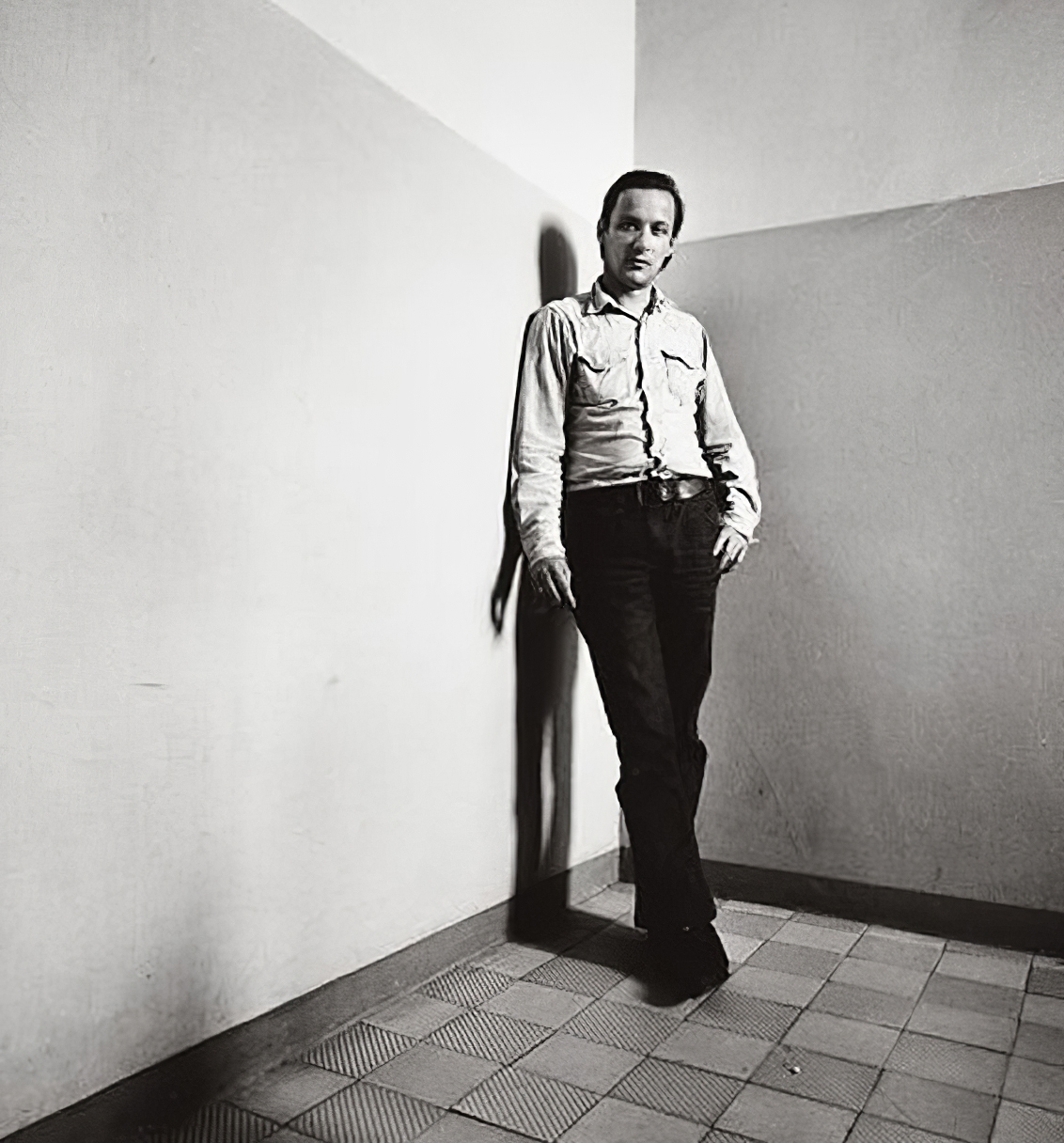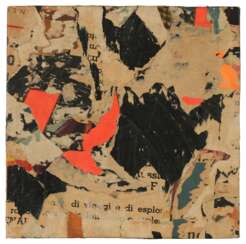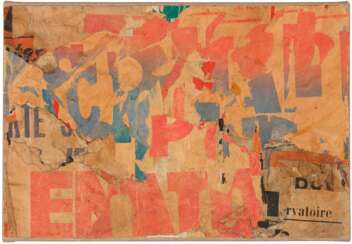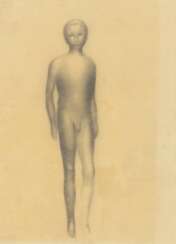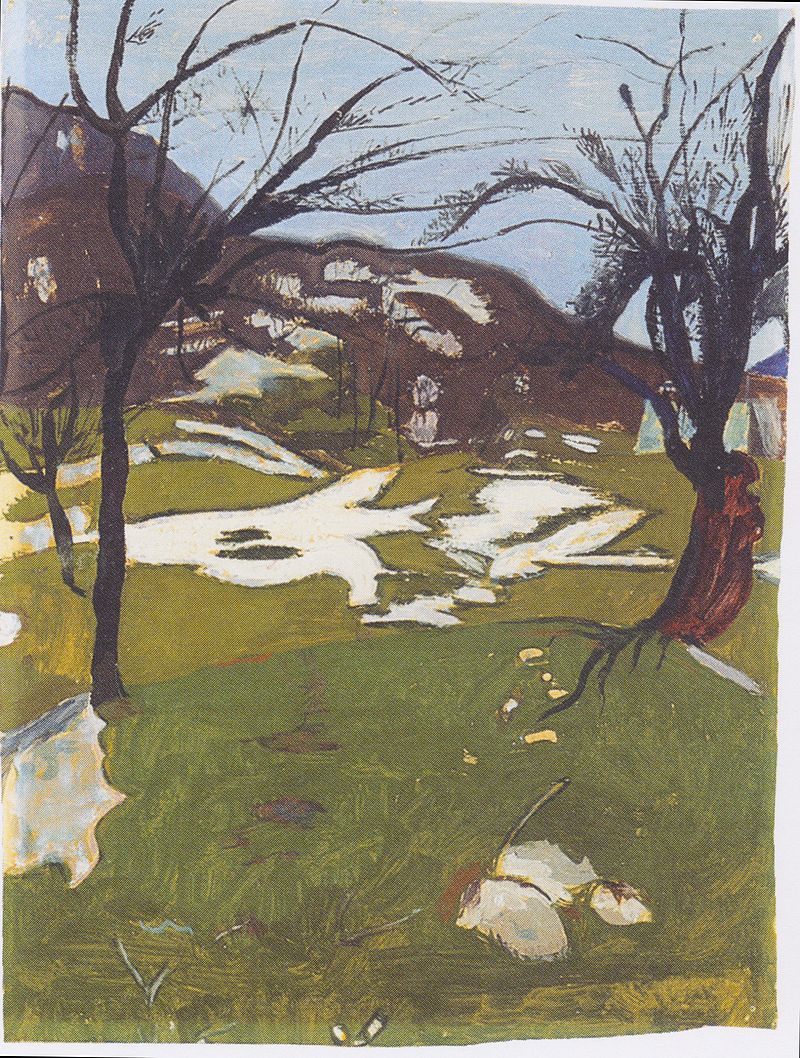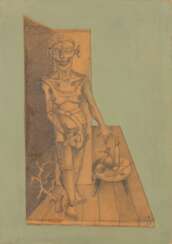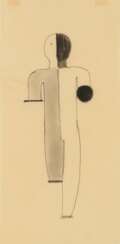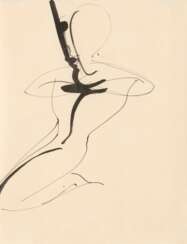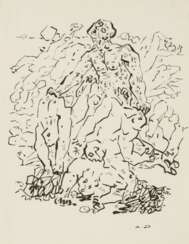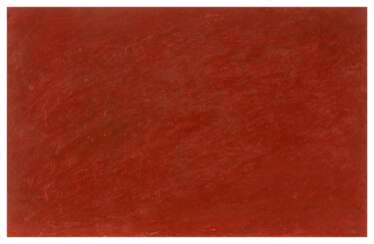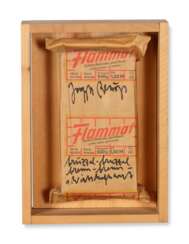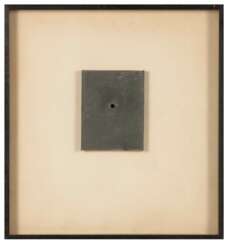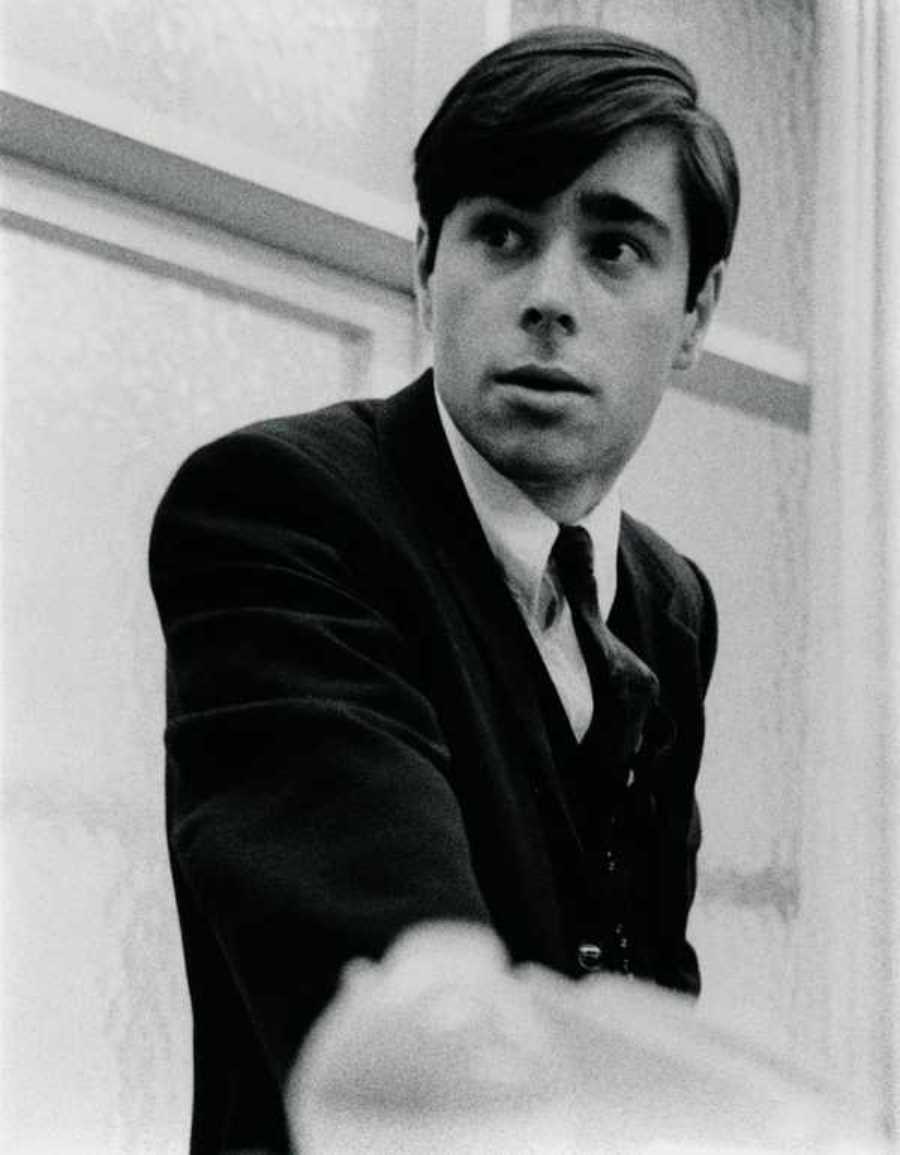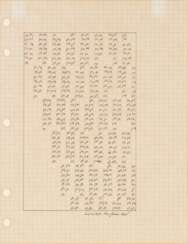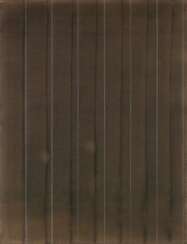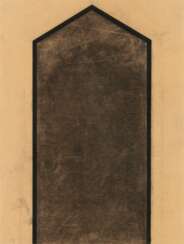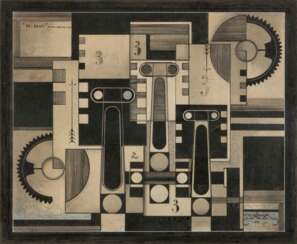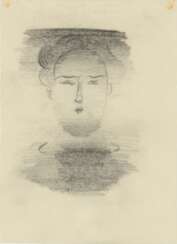
The Curator's Eye: The Collection of Professor Dr Karin von Maur
.jpg)
Hannah Höch was a German Dada artist. She is best known for her work of the Weimar period, when she was one of the originators of photomontage. Photomontage, or fotomontage, is a type of collage in which the pasted items are actual photographs, or photographic reproductions pulled from the press and other widely produced media.
Höch's work was intended to dismantle the fable and dichotomy that existed in the concept of the "New Woman": an energetic, professional, and androgynous woman, who is ready to take her place as man's equal. Her interest in the topic was in how the dichotomy was structured, as well as in who structures social roles.
Other key themes in Höch's works were androgyny, political discourse, and shifting gender roles. These themes all interacted to create a feminist discourse surrounding Höch's works, which encouraged the liberation and agency of women during the Weimar Republic (1919-1933) and continuing through to today.

Alexander Calder was an American artist celebrated for his revolutionary contributions to modern sculpture, including his invention of the mobile. Born into a family of artists on July 22, 1898, in Lawnton, Pennsylvania, and passing away on November 11, 1976, in New York, Calder harnessed his background in mechanical engineering to create kinetic sculptures that moved with air currents, alongside his monumental stationary sculptures known as "stabiles".
Calder's early life was marked by his creation of toys and various objects, showcasing his inherent talent and creativity from a young age. Despite initially pursuing a career in mechanical engineering, Calder's true calling in the arts was undeniable. He moved to New York City, where he enrolled at the Art Students League, laying the groundwork for his iconic artistic style. In 1926, Calder relocated to Paris, which became a pivotal moment in his career, leading to the creation of "Calder's Circus," a whimsical assembly of wire figures that gained him entry into the avant-garde art circles of Europe.
Throughout the 1930s and beyond, Calder's work evolved from figurative painting to abstract sculptures that brought motion into the realm of art, a transition influenced by his visit to Piet Mondrian's studio. His innovative mobiles and stabiles were celebrated for their ingenuity and aesthetic appeal, earning Calder international recognition and numerous accolades. Among his well-known public commissions are the .125 mobile for John F. Kennedy Airport and the monumental red-painted steel stabile, "Flamingo," for the Federal Center Plaza in Chicago.
Calder's legacy extends far beyond his sculptures; his work encompassed painting, printmaking, jewelry design, and even set and costume design for theatre productions. His influence on modern art is profound, inspiring future generations of artists to explore the kinetic possibilities of sculpture.
For art enthusiasts and collectors interested in Alexander Calder's groundbreaking work, staying informed about upcoming sales and auctions is essential. Sign up for updates to never miss an opportunity to own a piece by this influential American sculptor, highlighting his unique contributions to the art world.

Alexander Calder was an American artist celebrated for his revolutionary contributions to modern sculpture, including his invention of the mobile. Born into a family of artists on July 22, 1898, in Lawnton, Pennsylvania, and passing away on November 11, 1976, in New York, Calder harnessed his background in mechanical engineering to create kinetic sculptures that moved with air currents, alongside his monumental stationary sculptures known as "stabiles".
Calder's early life was marked by his creation of toys and various objects, showcasing his inherent talent and creativity from a young age. Despite initially pursuing a career in mechanical engineering, Calder's true calling in the arts was undeniable. He moved to New York City, where he enrolled at the Art Students League, laying the groundwork for his iconic artistic style. In 1926, Calder relocated to Paris, which became a pivotal moment in his career, leading to the creation of "Calder's Circus," a whimsical assembly of wire figures that gained him entry into the avant-garde art circles of Europe.
Throughout the 1930s and beyond, Calder's work evolved from figurative painting to abstract sculptures that brought motion into the realm of art, a transition influenced by his visit to Piet Mondrian's studio. His innovative mobiles and stabiles were celebrated for their ingenuity and aesthetic appeal, earning Calder international recognition and numerous accolades. Among his well-known public commissions are the .125 mobile for John F. Kennedy Airport and the monumental red-painted steel stabile, "Flamingo," for the Federal Center Plaza in Chicago.
Calder's legacy extends far beyond his sculptures; his work encompassed painting, printmaking, jewelry design, and even set and costume design for theatre productions. His influence on modern art is profound, inspiring future generations of artists to explore the kinetic possibilities of sculpture.
For art enthusiasts and collectors interested in Alexander Calder's groundbreaking work, staying informed about upcoming sales and auctions is essential. Sign up for updates to never miss an opportunity to own a piece by this influential American sculptor, highlighting his unique contributions to the art world.

Joseph Heinrich Beuys was a German artist, renowned for his significant contributions to the realms of sculpture, painting, and installation art, which have left a lasting impact on the culture and art world. His work transcended traditional boundaries, merging art with social theory and politics, thus redefining the role of the artist in society. Beuys's unique approach to materials, incorporating substances like fat and felt, symbolized healing and insulation, reflecting his broader philosophical and ecological concerns.
Beuys's art was deeply influenced by his experiences during World War II and his academic background in natural sciences and sculpture. His concept of "social sculpture" proposed that art could transform society, emphasizing creativity as a fundamental component of human existence. This vision led him to use his performances, or "actions," as a medium to communicate his ideas, making him a pivotal figure in the Fluxus movement. Notable works such as "How to Explain Pictures to a Dead Hare" and "7000 Oaks" exemplify his innovative use of performance and environmental art to engage and challenge the public.
His legacy is preserved in major museums and galleries worldwide, including the Museum of Modern Art in New York and the Tate Modern in London. These institutions house key pieces that exemplify Beuys's diverse artistic output, from his early drawings and sculptures to his later installations and public interventions. His influence extends beyond the art world, impacting environmental activism and educational reform, underscoring his belief in the transformative power of art.
For collectors and experts in art and antiques, Joseph Heinrich Beuys remains a figure of immense interest, not only for his groundbreaking artworks but also for his profound impact on contemporary art theory and practice. To stay informed about new product sales and auction events related to Beuys, we invite you to sign up for updates. This subscription ensures you are always in the loop regarding opportunities to engage with the enduring legacy of one of the most influential artists of the 20th century.
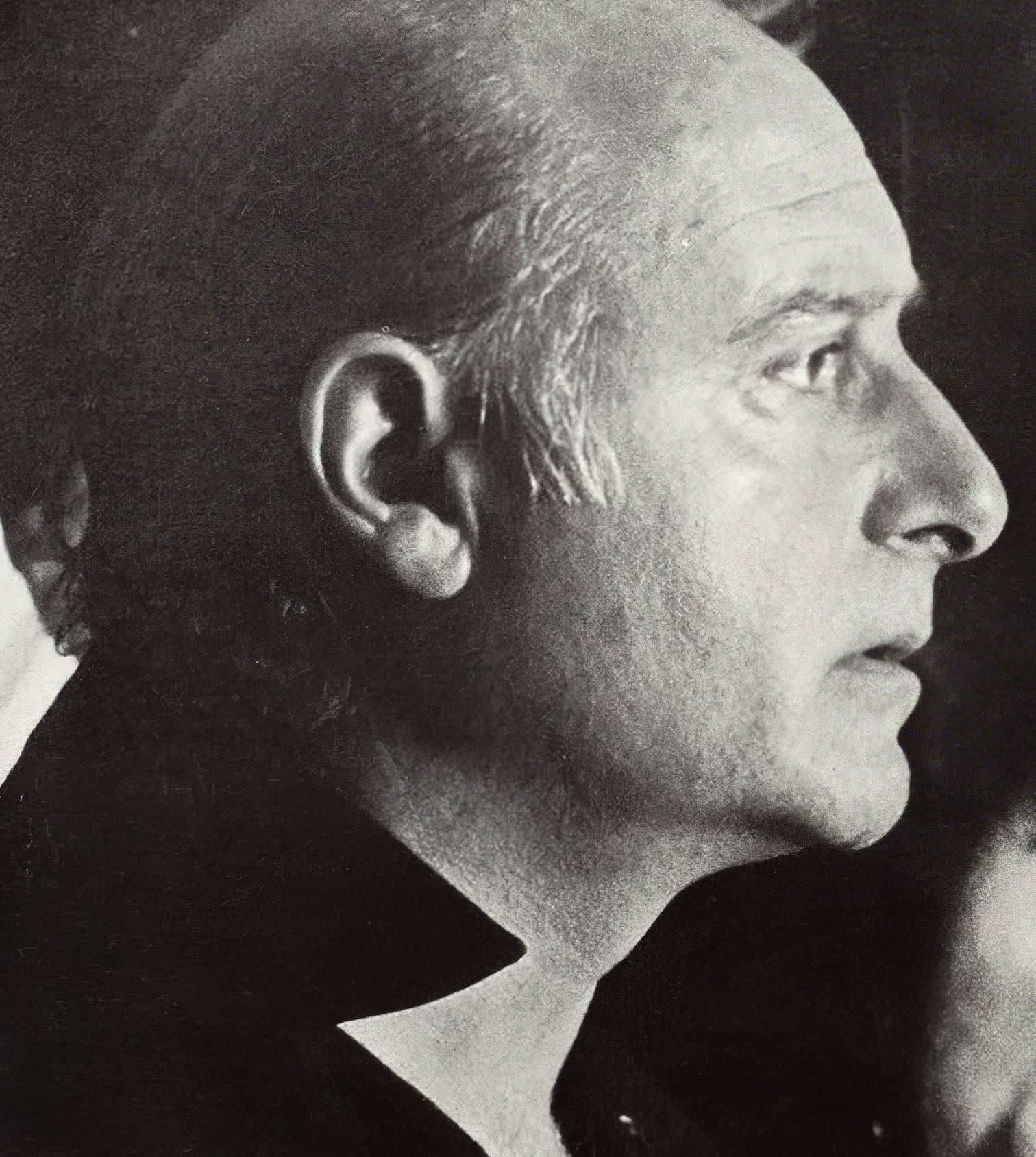
Domenico (Mimmo) Rotella was an Italian artist considered an important figure in post-war European art. Best known for his works of décollage and psychogeographics, made from torn advertising posters. He was associated to the Ultra-Lettrists an offshoot of Lettrism and later was a member of the Nouveau Réalisme, founded in 1960 by the art critic Pierre Restany.
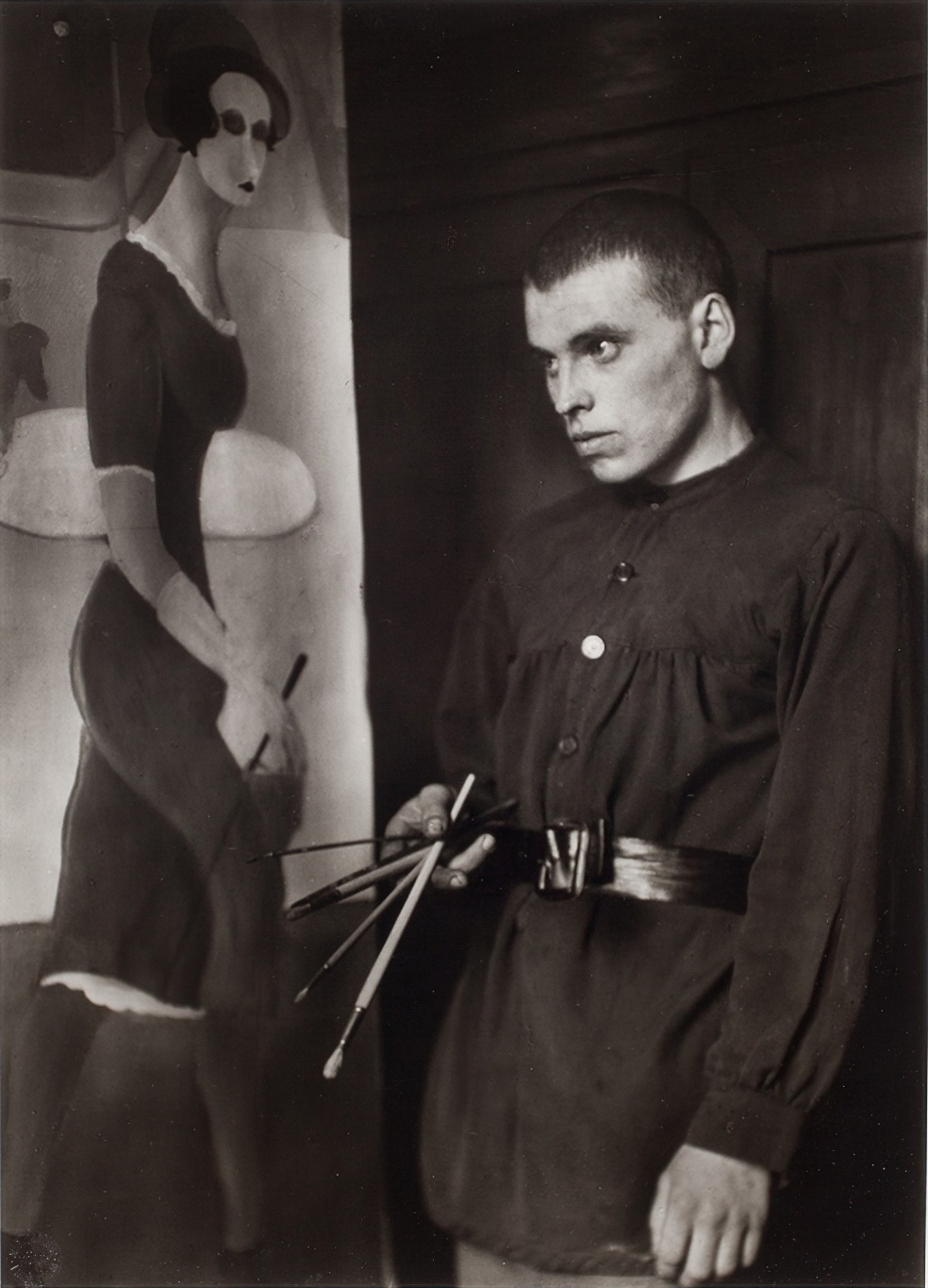
Gottfried Waldemar Brockmann was a German artist, educator, publisher, and served as a cultural advisor for the city of Kiel, Germany. He taught at Muthesius Academy of Art in Kiel.

Oskar Schlemmer was a German artist, painter, sculptor, choreographer and designer, and was associated with the Bauhaus movement.
Schlemmer studied at the Kunstgewerbeschule in Stuttgart before becoming a student at the Bauhaus in Weimar in 1920. He taught at the Bauhaus from 1923 to 1929, and was the director of the theater workshop from 1924 to 1929. During this time, he developed a unique style that combined elements of sculpture, painting, and dance.
Schlemmer's work often explored the relationship between the human body and space, and he created a number of abstract figures and costumes for dance performances. He also created a series of sculptures and paintings that explored the idea of the "human condition" and the role of technology in society.
Schlemmer's work was considered controversial by the Nazis, who saw it as "degenerate art." He was forced to leave the Bauhaus in 1929, and his work was removed from public collections in Germany. Despite this, his work continued to be exhibited in Europe and the United States, and he is now considered one of the most important artists of the 20th century.

Oskar Schlemmer was a German artist, painter, sculptor, choreographer and designer, and was associated with the Bauhaus movement.
Schlemmer studied at the Kunstgewerbeschule in Stuttgart before becoming a student at the Bauhaus in Weimar in 1920. He taught at the Bauhaus from 1923 to 1929, and was the director of the theater workshop from 1924 to 1929. During this time, he developed a unique style that combined elements of sculpture, painting, and dance.
Schlemmer's work often explored the relationship between the human body and space, and he created a number of abstract figures and costumes for dance performances. He also created a series of sculptures and paintings that explored the idea of the "human condition" and the role of technology in society.
Schlemmer's work was considered controversial by the Nazis, who saw it as "degenerate art." He was forced to leave the Bauhaus in 1929, and his work was removed from public collections in Germany. Despite this, his work continued to be exhibited in Europe and the United States, and he is now considered one of the most important artists of the 20th century.

Oskar Schlemmer was a German artist, painter, sculptor, choreographer and designer, and was associated with the Bauhaus movement.
Schlemmer studied at the Kunstgewerbeschule in Stuttgart before becoming a student at the Bauhaus in Weimar in 1920. He taught at the Bauhaus from 1923 to 1929, and was the director of the theater workshop from 1924 to 1929. During this time, he developed a unique style that combined elements of sculpture, painting, and dance.
Schlemmer's work often explored the relationship between the human body and space, and he created a number of abstract figures and costumes for dance performances. He also created a series of sculptures and paintings that explored the idea of the "human condition" and the role of technology in society.
Schlemmer's work was considered controversial by the Nazis, who saw it as "degenerate art." He was forced to leave the Bauhaus in 1929, and his work was removed from public collections in Germany. Despite this, his work continued to be exhibited in Europe and the United States, and he is now considered one of the most important artists of the 20th century.
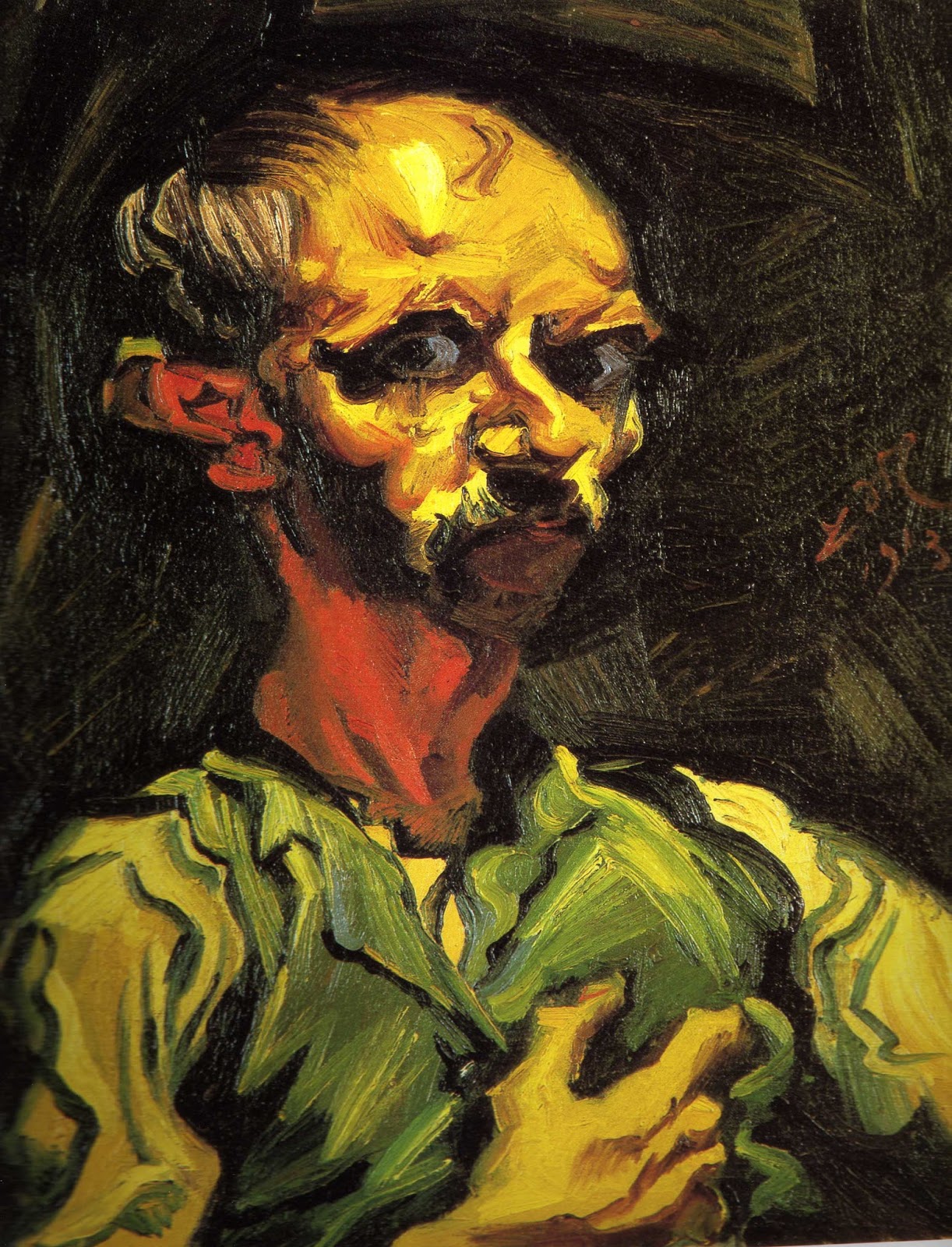
Ludwig Meidner is a German painter and writer, a representative of the expressionist school of art. Meidner is best known for his painted and printed portraits and landscapes, but is especially known for his 'apocalyptic' series of works that show his stylised visions of the coming transformation of Germany before the First World War.
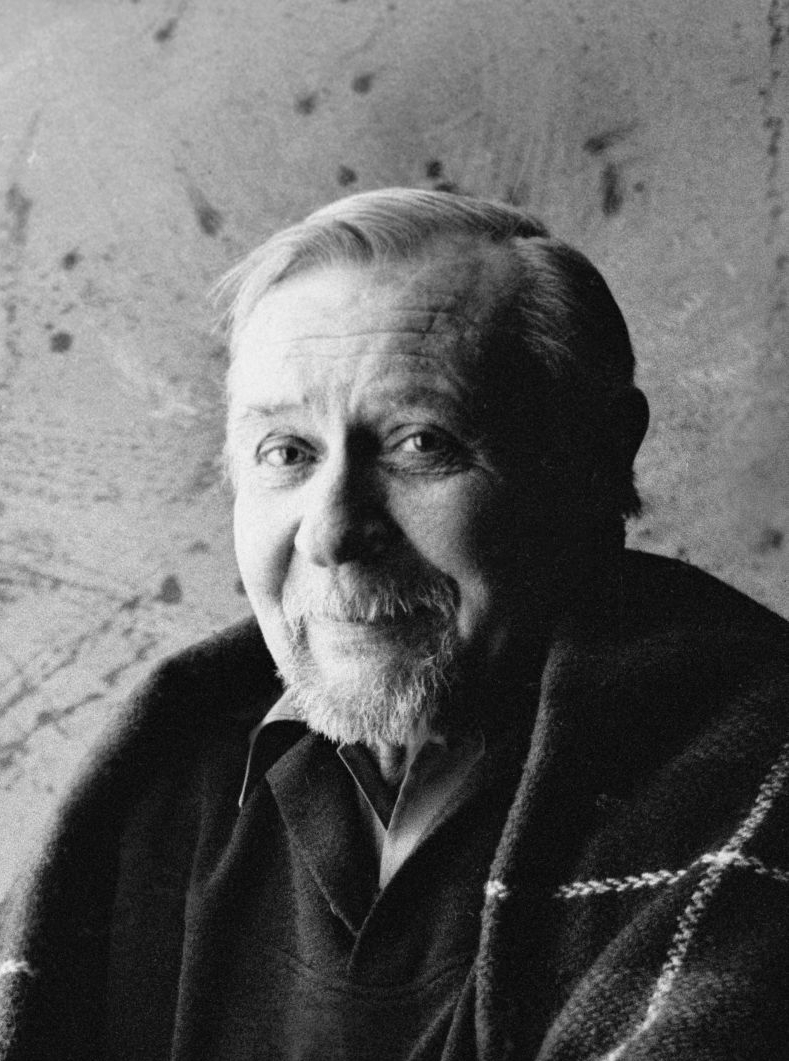
André-Aimé-René Masson was a French artist, celebrated for his profound influence on the world of modern art, particularly in painting and sculpture. Born in 1896, Masson's work is emblematic of the Surrealist movement, although his style evolved across different phases throughout his career. His ability to fuse dream-like imagery with abstract forms set him apart from his contemporaries, making him a pivotal figure in the development of Surrealism and beyond.
Masson's art is characterized by its dynamic forms and the integration of automatic drawing, where the unconscious mind is allowed to express itself without rational oversight. This technique not only foregrounded Surrealism's fascination with the subconscious but also highlighted Masson's unique ability to capture the complexity of human emotion and thought on canvas. His works, such as "The Metamorphosis of the Lovers" and "Battle of Fishes," are not just visual experiences but portals to the intricate layers of the psyche, showcasing his mastery over both form and content.
Notably, André-Aimé-René Masson's contributions extend beyond individual creativity; his works are housed in prestigious museums and galleries worldwide, including the Museum of Modern Art in New York and the Centre Georges Pompidou in Paris. These institutions recognize Masson's art not merely as aesthetic achievements but as cultural landmarks that continue to inspire and provoke. His legacy persists, offering rich insights into the intersections of art, psychology, and philosophy.
For collectors and experts in art and antiques, André-Aimé-René Masson's oeuvre represents a fascinating exploration of the Surrealist movement and its enduring impact on modern and contemporary art. His innovative approach to painting and sculpture invites ongoing discussion and appreciation among enthusiasts and scholars alike. We invite you to sign up for updates on new product sales and auction events related to André-Aimé-René Masson, ensuring you stay informed about opportunities to engage with the remarkable legacy of this pivotal artist. This subscription is your gateway to the forefront of art collection, focusing exclusively on Masson's influential body of work.

Salvador Dalí, a Spanish Surrealist painter and printmaker, is celebrated for his vivid and imaginative works that delve into subconscious imagery. Born on May 11, 1904, in Figueres, Catalonia, Spain, Dalí's early exposure to Impressionism and Renaissance masters significantly influenced his artistic development. His education in fine arts in Madrid further shaped his style, leading him to experiment with Cubism and avant-garde movements. In the late 1920s, Dalí embraced Surrealism, joining the Surrealist group in 1929 and rapidly becoming one of its most prominent figures.
Dalí's most famous work, "The Persistence of Memory," completed in 1931, epitomizes the Surrealist movement with its iconic melting clocks symbolizing the fluidity of time. His artistic repertoire was diverse, including painting, graphic arts, film, sculpture, design, and photography, often incorporating themes of dreams, the subconscious, sexuality, religion, and science. Despite his remarkable artistic contributions, Dalí's eccentric and flamboyant public persona often overshadowed his work. He faced criticism for his public support of the Francoist regime and the authenticity of some of his late works.
Dalí's legacy is preserved in major museums, notably the Dalí Theatre-Museum in Figueres and the Salvador Dalí Museum in St. Petersburg, Florida. These institutions showcase his extensive and varied body of work, illustrating his profound impact on Surrealism, pop art, and contemporary artists.
If you're captivated by the surreal world of Salvador Dalí and want to stay informed about new sales and auction events featuring his works, sign up for our updates. Our service is tailored specifically for art collectors and experts, providing timely information and insights into the vibrant market of Dalí's art. Remember, this subscription is focused solely on bringing you the latest in product sales and auction events related to Salvador Dalí. Don't miss out on the opportunity to enrich your collection with pieces from one of the most influential surrealists of all time. Sign up now and be the first to know about these exclusive events.
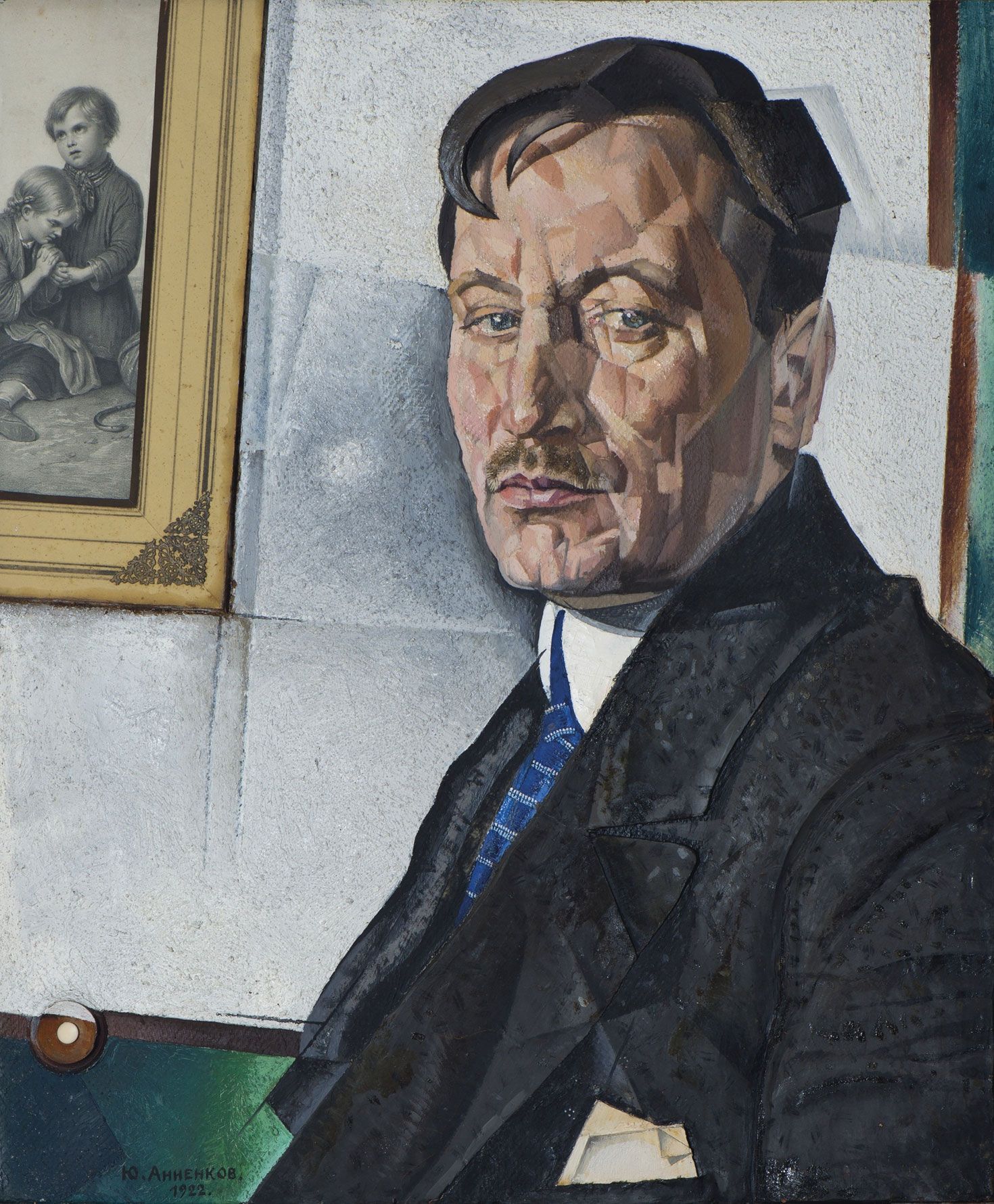
Yury Pavlovich Annenkov (Russian: Юрий Павлович Анненков) was a prominent Russian artist, renowned for his avant-garde book illustrations and portraits, as well as his work in theater and cinema. Born in 1889 in Petropavlovsk, Russian Empire, and passing away in 1974 in Paris, France, Annenkov's artistic journey was shaped by the tumultuous times he lived in. His work is celebrated for capturing the essence of an era marked by revolution and change, employing a style that is both dynamic and reflective of the Synthetism movement, emphasizing the synthetic essence of his subjects.
Annenkov's early years were spent in St. Petersburg, where he was influenced by prominent figures and movements of the time. He honed his skills in Paris, working in the studios of Maurice Denis and Félix Vallotton, and later, his talents led him to design iconic works for the Bolshevik government, such as the staging of "The Storming of the Winter Palace". His acclaimed book "Portraits," published in 1922, featured 80 pictures of key Russian art figures, showcasing his exceptional talent in capturing personalities through his art.
In 1924, Annenkov left Soviet Russia, eventually settling in Paris, where he continued to flourish as an artist, working on landscapes, female portraits, interiors, and achieving success in the film industry as a costume designer, notably receiving an Academy Award nomination for his work.
Among his notable works are "Dreams of a Provincial (Borovichi)," "Portrait of Elena Borisovna Annenkova," "June. Forest," "Portrait of Miron Abramovich Sherling," "Portrait of A.M. Gorky," and the "Illustration for the poem 'The Twelve' by A.A. Blok," each piece highlighting his ability to blend academic drawing with avant-garde techniques.
For collectors and art and antiques experts, Annenkov's works offer a glimpse into the rich tapestry of 20th-century Russian art, marked by its innovation, depth, and historical significance. His legacy continues to inspire and captivate audiences worldwide.
To stay updated on sales and auction events featuring Yury Pavlovich Annenkov's work, sign up for our newsletter. This subscription ensures you'll be the first to know about new product sales and auction events related to this remarkable artist.

Joseph Heinrich Beuys was a German artist, renowned for his significant contributions to the realms of sculpture, painting, and installation art, which have left a lasting impact on the culture and art world. His work transcended traditional boundaries, merging art with social theory and politics, thus redefining the role of the artist in society. Beuys's unique approach to materials, incorporating substances like fat and felt, symbolized healing and insulation, reflecting his broader philosophical and ecological concerns.
Beuys's art was deeply influenced by his experiences during World War II and his academic background in natural sciences and sculpture. His concept of "social sculpture" proposed that art could transform society, emphasizing creativity as a fundamental component of human existence. This vision led him to use his performances, or "actions," as a medium to communicate his ideas, making him a pivotal figure in the Fluxus movement. Notable works such as "How to Explain Pictures to a Dead Hare" and "7000 Oaks" exemplify his innovative use of performance and environmental art to engage and challenge the public.
His legacy is preserved in major museums and galleries worldwide, including the Museum of Modern Art in New York and the Tate Modern in London. These institutions house key pieces that exemplify Beuys's diverse artistic output, from his early drawings and sculptures to his later installations and public interventions. His influence extends beyond the art world, impacting environmental activism and educational reform, underscoring his belief in the transformative power of art.
For collectors and experts in art and antiques, Joseph Heinrich Beuys remains a figure of immense interest, not only for his groundbreaking artworks but also for his profound impact on contemporary art theory and practice. To stay informed about new product sales and auction events related to Beuys, we invite you to sign up for updates. This subscription ensures you are always in the loop regarding opportunities to engage with the enduring legacy of one of the most influential artists of the 20th century.

Joseph Heinrich Beuys was a German artist, renowned for his significant contributions to the realms of sculpture, painting, and installation art, which have left a lasting impact on the culture and art world. His work transcended traditional boundaries, merging art with social theory and politics, thus redefining the role of the artist in society. Beuys's unique approach to materials, incorporating substances like fat and felt, symbolized healing and insulation, reflecting his broader philosophical and ecological concerns.
Beuys's art was deeply influenced by his experiences during World War II and his academic background in natural sciences and sculpture. His concept of "social sculpture" proposed that art could transform society, emphasizing creativity as a fundamental component of human existence. This vision led him to use his performances, or "actions," as a medium to communicate his ideas, making him a pivotal figure in the Fluxus movement. Notable works such as "How to Explain Pictures to a Dead Hare" and "7000 Oaks" exemplify his innovative use of performance and environmental art to engage and challenge the public.
His legacy is preserved in major museums and galleries worldwide, including the Museum of Modern Art in New York and the Tate Modern in London. These institutions house key pieces that exemplify Beuys's diverse artistic output, from his early drawings and sculptures to his later installations and public interventions. His influence extends beyond the art world, impacting environmental activism and educational reform, underscoring his belief in the transformative power of art.
For collectors and experts in art and antiques, Joseph Heinrich Beuys remains a figure of immense interest, not only for his groundbreaking artworks but also for his profound impact on contemporary art theory and practice. To stay informed about new product sales and auction events related to Beuys, we invite you to sign up for updates. This subscription ensures you are always in the loop regarding opportunities to engage with the enduring legacy of one of the most influential artists of the 20th century.
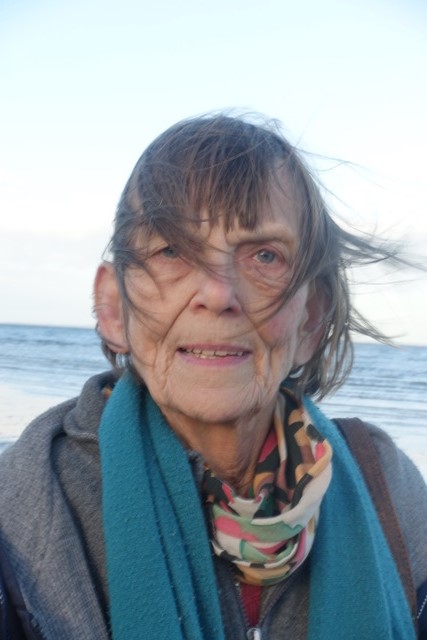
Erdmut Bramke is a contemporary German artist. She was a guest professor at the Stuttgart State Academy of Fine Arts. She has documented 600 paintings, 1500 works on paper, 80 solo exhibitions, 200 group exhibitions and the artistic decoration of numerous public buildings. Erdmut Bramke consistently represents concrete art. Her concern is the purification of art to a pure return to colour and form, structure and rhythm. In her work she strives for law, harmony and order, real content is not her subject.

Oskar Schlemmer was a German artist, painter, sculptor, choreographer and designer, and was associated with the Bauhaus movement.
Schlemmer studied at the Kunstgewerbeschule in Stuttgart before becoming a student at the Bauhaus in Weimar in 1920. He taught at the Bauhaus from 1923 to 1929, and was the director of the theater workshop from 1924 to 1929. During this time, he developed a unique style that combined elements of sculpture, painting, and dance.
Schlemmer's work often explored the relationship between the human body and space, and he created a number of abstract figures and costumes for dance performances. He also created a series of sculptures and paintings that explored the idea of the "human condition" and the role of technology in society.
Schlemmer's work was considered controversial by the Nazis, who saw it as "degenerate art." He was forced to leave the Bauhaus in 1929, and his work was removed from public collections in Germany. Despite this, his work continued to be exhibited in Europe and the United States, and he is now considered one of the most important artists of the 20th century.

Oskar Schlemmer was a German artist, painter, sculptor, choreographer and designer, and was associated with the Bauhaus movement.
Schlemmer studied at the Kunstgewerbeschule in Stuttgart before becoming a student at the Bauhaus in Weimar in 1920. He taught at the Bauhaus from 1923 to 1929, and was the director of the theater workshop from 1924 to 1929. During this time, he developed a unique style that combined elements of sculpture, painting, and dance.
Schlemmer's work often explored the relationship between the human body and space, and he created a number of abstract figures and costumes for dance performances. He also created a series of sculptures and paintings that explored the idea of the "human condition" and the role of technology in society.
Schlemmer's work was considered controversial by the Nazis, who saw it as "degenerate art." He was forced to leave the Bauhaus in 1929, and his work was removed from public collections in Germany. Despite this, his work continued to be exhibited in Europe and the United States, and he is now considered one of the most important artists of the 20th century.






